GALILEAN NAZARENES
The land of Galilee held a prominent Essene population, primarily Nazarene (Nazorean). The Nazarenes* lived as far north as Damascus, with settlements along the Dan River and in a particular area known as the Hauran (the Arabian Desert, now the Syrian Desert), founding the towns of Cochaba and Nazara. This desert area contained ancient volcanic soil and was very fruitful. Nazara was later transposed as Nazareth when translated into Greek.
*Acts 24.5, “sect of the Nazarenes.”
 Northern Galilee, note the city of Dan, upper right.
Northern Galilee, note the city of Dan, upper right.
Hauran (gray area showing volcanic region), located in Batanea, east of the Sea of Galilee).
City and district locations, note Mt. Hauran (center-right). The Tetrarchy of Philip would designate a general outline of Nazarene lands as well as those of the Hasadim, which might include several smaller and less-known sub-groups. The Nazarenes were one of these Hasidic groups. The Decapolis also shared some of these Hasidic populations, as did Samaria. North of Judea and Jerusalem, the conservative lawyers religiously considered these regions as rebel lands. “The roots of the revolutionary ideas of the Judaeo-Christians can be traced directly to the Hasidim (Mysteries of the Bridechamber, V. LePage, p. 112).” The Hasadim (Holy Hasidics) were particularly pious and maintained semi-retreat lifestyles, moreso removed outside of cities at that time.
Eusebius writes of the later established Nazorean sect, which was the primary designated name for Jesus’ followers until later in the 2nd Century:
“Today this Nazorean sect exists in Beroea in Coele Syria, in the Decapolis in the region of Pella, and Bashan in the place called ‘Cocaba’ [star], which in Hebrew is called ‘Kochabe’. The Disciples dwelled in Pella after they departed from Jerusalem, for Christ had told them to leave Jerusalem and withdraw from it because it was about to be besieged. For this reason, they settled in Perea…that was where the sect of the Nazoreans began.”*
*Eisenman. The New Testament Code, 513. Sterling Pub. Co. 2006. Print.
Victoria LePage, Mysteries of the Bridechamber: “Now Epiphanius states that Cochaba had the meaning of a star, and Justin Martyr, writing around 150 CE, says that another village lay nearby to Cochaba called Nazara, meaning a sprout or branch. So these early Christian researchers, familiar with Nazarene symbology, seemed to have interpreted it along the same lines as Schonfield. They located Jesus’ family home in the eastern rather than the western Galilean zone, pinpointing it at Nazara, the place that had been given a messianic nomenclature that accorded of the old biblical prophecies.”
Num. 24.17, Balaam speaks, “A star (cochab) shall rise out of Jacob, and a flower (branch) shall spring from the root of Jesse.” This scripture is always attributed as a reference to Jesus.
Essene, both northern (Nazarenes) and southern (Ossaean) maintained synagogues apart from Pharisees. There was an Essene synagogue/temple in Jerusalem with the Essene Gate located on the southwestern side of the city just south of David’s Tower. This was probably used primarily by the Qumran (Ossaean) Essene. This entrance would allow Essenes to come and go without mixing with the general population.
*
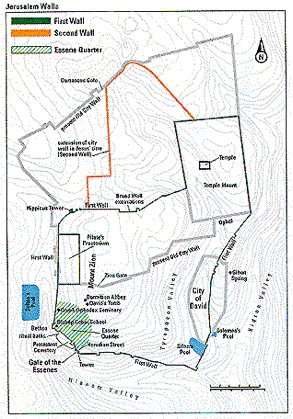
Essene quarter and gate (green)
NAZARENE ROOTS
Most Christian seminaries teach that Jesus was a Pharisee, which is incorrect—Jesus was a Nazarene Essene and probably associated with Qumran at least to some extent. Many clues support the Nazarene origin of Jesus. Jesus teaches through parables, a trademark of Nazarene priestly training, and this position was also held in Qumran. Whereas, Pharisees, Sadducees tended to teach through the law, directly. For example, the Sadducees would only recognize the Pentateuch as the law, with all other books sublimated as less than the law as Moses gave it. Parable teaching would have no place within the Sadducean religious structure.
In Jn. 3.11, Jesus makes a revealing statement. He speaks to Nicodemus, a high-ranking Pharisee and member of the Great Sanhedrin in Jerusalem. Jesus says, “…We speak that we know, and testify that we have seen; and ye receive not our testimony.” The ‘we and you’ tell us Jesus was not a Pharisee.
Two statements by Jesus illustrate the divergence from Pharisaic theology: “The kingdom of God is within you,” Luke 17.2, and “… unless a person is born again from above, he cannot see the kingdom of God,” John 3.3. Neither of the above scriptures seems much to do with Pharisaic teachings. As we observe the tortured response of Nicodemus (Jn. 3.4), we can also ascertain that these two statements would be news to the rest of the priesthood and Pharisee adherents.
Another strong indication of an Essene background comes from Mark 1.27, “And they were all amazed, insomuch that they questioned among themselves, saying, “What thing is this? what new doctrine is this? for with authority commandeth he even the unclean spirits, and they do obey him.” The key word is ‘doctrine’, as is also related in v. 22, “And they were astonished at his doctrine: for he taught them as one that had authority, and not as the scribes.” Neither Jesus’ doctrine, his method of teaching, nor his actions (delivering the unclean spirit) has any relation to Pharisaism.
Although Jesus taught in the Pharisee synagogues, as most of the population was Pharisaic, especially in Judea, his roots lie in the more mystical Nazarene outlook on spirituality and relationship to God. One principle of great controversy dealt with women, the mystic side of masculine-feminine polarity. Not only traveling with women, and to the woman at the well in Samaria (Jn. ch. 4), who first recognizes Jesus as Messiah, and the continued presence of Mary Magdalene, all point to an altered status concerning women.*
*Adam and Eve; Forgiveness, Women, and Oaths.
The loftier mystic speaking platform indicates one reason why ordinary people marveled at his knowledge, wisdom, and authority. Jesus moves beyond the interpretation of the law, and announces quintessential ideas and principles uniting all men, and reduces all interpretations of the law into subjugation under love and forgiveness, embodying grace.* Where before stood the knowledge of God and the Law, now also enters the Spirit, the active principle that gives true life, wisdom, and enlightenment, the spiritual walk as opposed to the legal walk. Jesus presents the new enlightenment for mankind. This enlightenment is that the Spirit gives knowledge and wisdom to the Mind, thence to be understood by the repository which is you, the Soul. The mind receives the knowledge but the soul (you) makes the final decision. The soul has free will (choice). Revelation is of the spirit.
*No longer imputing sin, Jn. 8.10-15. Grace, see Noah.
Jesus also provides another often misinterpreted teaching. He references ‘oneness’ and ‘wholeness’ as opposed to the often incorrect biblical interpretation listed as ‘perfection’. That is, the word ‘perfection’ may be used, but its meaning is intended as wholeness or oneness, as in, “I and the Father are one*.” In contrast to the Ossaean Essene and the Pharisee, whose problem becomes this vain attempt at perfect purity—outward pictured by asceticism, a multitude of purity laws, and commentaries ad infinitum—Jesus more correctly speaks to the issue of inner wholeness and unification, essentially the man himself.
*John 10.20-38 gives a good account of this principle.
Jesus’s version of ‘perfection’ deals with the enlightened vision within a relationship with God, thence manifested in and from the individual as the spirit or kingdom expressed. Essentially, Jesus teaches the basic understanding of the Way. “Be like God,” Jesus tells his disciples; in Matt. 22.32, “God is not the God of the dead [unawakened], but of the living,” or those awakened to the spirit. A person cannot walk in Jesus’ way by ‘knowing about’, but must awaken and begin to participate. Throughout his ministry, Jesus teaches, demonstrates, and prods the disciples toward this greater awakening.
As to the word ‘perfection’ itself, the discipline of perfecting oneself can lead to nitpicking at every minor transgression and will soon 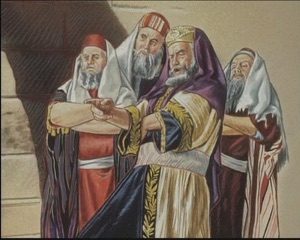 lead to condemnation. This teaching method can tear a person down and leave deep wounds. Following the law by iota instead of the spirit of the law seems to be much of what the scribes and Pharisees practiced, this perfection within the law and do’s and do not’s—love leaves the room when the harshness of the law enters. The Sadducees, Pharisees and scribes, and some Qumran priests tried to confound Jesus with subtle as well as straightforward arguments. With a similar approach they later convicted him of wrongdoing.
lead to condemnation. This teaching method can tear a person down and leave deep wounds. Following the law by iota instead of the spirit of the law seems to be much of what the scribes and Pharisees practiced, this perfection within the law and do’s and do not’s—love leaves the room when the harshness of the law enters. The Sadducees, Pharisees and scribes, and some Qumran priests tried to confound Jesus with subtle as well as straightforward arguments. With a similar approach they later convicted him of wrongdoing.
Jesus, however, accepted their challenge. For instance, he administered healing on the Sabbath (Mt. 12.12-14). No Pharisee or Essene priest would do such a thing even if they were adept in the healing art. Jesus brought wholeness to the table for them to behold, but the priests and elders stuck to their notion of what was perfect under the law.
Near the time of Jesus’ birth, an increasing focus on the coming of the Messiah emerged. The messianic urge was most prominent among the Essene, Galilean (Nazarene), and Judean (Ossaean). The prophetic nature of Essene astrological studies confirms why the three wise men* appear in scripture. They also followed the same astrological signs, Mt. 2.2, “… his star in the east,” is the star that designates Messiah. The wise men are usually considered Babylonian Jews from or traveling through Damascus. Interestingly, it is to Damascus Saul is later headed to clear out Nazarenes who practiced the Way (Acts 9.1).
* The three wise men: mentioned in the court records of Herod (Mt. 2.7).
Nazarene Essenes were against and did not practice animal sacrifice. Organized under Ezra, sacrifice established under the Second Temple left the more knowledgeable as well as Hasidic mystic traditions as if in a dried-up wheat field, as sacrifice mimicked pagan rituals and soon sublimated the prophetic voice. The wisdom teachings went into a kind of retreat, kept in greater and ever greater secrecy, and the mystic knowledge foundation went with them. This secrecy is clearly demonstrated within the Qumran Essene, who provided priestly training, but kept the knowledge from those outside the priesthood.
Within Judea and much of the north, Israel, the knowledge of the law and obedience to the law became more pronounced. The ‘legal version’ of Judaism fits more closely with the scribes, of whom the Pharisees were fond. This mystic/legal schism delivered a burgeoning split from the mystic relationship of God to man, man to God, and man to man ethos. Further, the law superseded any context of the feminine. The woman was not so much spiritually denigrated but also not uplifted, as contrarily we later observe woman’s participation in the Jesus ministry.* In effect, the migration of knowledge and the arts of the adept vacated the Jerusalem law-giving Ezra cult and generated an internal diaspora.
*See, Forgiveness, Women & Oaths.
Jesus is not known to practice sacrifice during his ministry. That man must come to God and spiritually sacrifice himself, thus awakening from his possessed inner law as well as remaining on the intellectual plain of formal law—the ascent from mortal nature (fallen nature), would be described as the ascent into the Nazarene mystical relationship to God. Although not described in this manner, many modern churches espouse this doctrine, although it is usually couched in language as ‘coming to Christ’, but may not always focus on a pronounced internal change, usually substituting faith without acute self-inspection.
Among the Essene mystic studies concerning spiritual light and dark (Sons of Light, Sons of Darkness), and therefore the resolution of events on a much broader scale, is an emphasized theology. This theology has roots in the Book of Enoch (see Enoch, Watchers). Many scholars believe the historical period described in Enoch, from which the Hasidic Essenes were first formed, and generally identified as the Brotherhood of the Righteous, congregated to establish a solid root.*
*Also, Great White Brotherhood, Rev. 7.9, “…standing before the throne and before the Lamb, clothed with white robes, with palm branches in their hands, (10) and crying out with a loud voice, saying ‘Salvation belongs to our God who sits on the throne, and to the Lamb!’ ” Also, Rev. 7.13-17.
Jesus did teach the Essene theology of light contrasting with dark, as in John 3.20, “doeth evil that hateth the light.” However, Jesus differs from his Essene counterparts and removes their teaching of predestination to a much higher standard.* That standard is reflected in the Parable of the Prodigal Son—there is always hope, and a return to righteousness is always accepted. Predestination is not a part of Jesus’ teaching. For those who feel they are predestined or cursed, the knowledge and wisdom of walking in the Way can be helpful, as well as the practice of sowing good seeds to extricate oneself, for the inner man is accounted. Jesus would espouse that a spiritual core must be established, above all else.
*The Dead Sea Scrolls contains many references to those predestined to enter the darkness.
For the Nazarene, contemplative life is considered central to the practice of the Way (also noted as the Way of Love). Jesus would offer revelation from the spirit of God, revelatory from the heart as opposed to the intellect, as expressing compassion and assigning grace, such as through healing, or forgiveness (grace). Countering such are the scribes who collected and transcribed manuscripts. Their working method emphasized a practice of the law that requires an intellectual discipline rather than contemplative, inspirational, or the deeper mystical knowledge base Jesus demonstrated.
Jesus’ teachings are rarely grasped at first hearing. Spiritual (of the spirit) cognition is required. Spirit witnesses to spirit.* Contrarily, the lawyered mentality (not revelatory) might best describe some Qumran Ossaean Essene, especially active scribes and lawyers. Although contemplation was always a Jewish tradition, the view of what the law prescribed and the interpretation thereof, overrode all other considerations. In other words, their emphasis contemplated the law to deduce intricate meanings or nuance.
Mt. 10.20; 12.28; 26.41; 14.38; Lk. 11.13; Jn. 4.23.
Nazarene Essenes would be relatively easy to convert to Jesus as the Anointed One (Messiah). During Jesus’ last Passover, some scholars believe that many of his supporters in Jerusalem were Nazarene Essene. Since the celibate Qumran Essene did not have children,* this would leave only the Nazarenes as candidates for such numerous support groups. The hardcore Knowers gathered and waited expectantly to recognize what they considered one of their own. Some of these adherents were also evident during the early ministry in Galilee.
*see Mt. 23.15, “…for you compass land and sea to make one proselyte, and when he is made you make him twofold more the child of hell than yourselves.”

In all, there were probably 7,000 to 12,000 of his supporters in Jerusalem, by some estimates. The crowds speak to those numbers. The attending crowds provided the motivation for authorities to perceive Jesus as a threat. Imagine thousands welcoming this one man into Jerusalem and with all the accolades which signify Messiah—he enters by the eastern gate, he rides on a donkey never before ridden, palm fronds (not native to Jerusalem, but brought in from Jericho) laid before his pathway—this frightening vision would startle the High Priests of the Sanhedrin. Later revolutionary actions confirmed their fears.
PART II
SPIRITUAL BELIEFS
Holy Spirit
The term ‘Father’ represents the masculine, the Creator of Creation. Holy Spirit stems from ‘Shekinah’ or ‘Shekinah Glory’, which is feminine. The root of Shekinah is ‘Shin’. Shin is a feminine attribution in Hebrew and infers new birth or awakening. The anointing by the ‘Shekinah Glory’ awakened the mind to the indwelling of God, the kingdom within, and thus to accept the workings of God into each individual’s daily life. All Jews, including Jesus’ supporters, would believe in the One God indivisible or unified, with masculine and feminine attributes, as we would describe such attributes from our earthly view.
Exodus 29.46 tells us, “That brought them forth out of the land of Egypt, that I may dwell among them.”* The concept of indwelling is emphasized throughout scripture and will become critical to the Nazarene conversion. No spiritual conversion occurs through the intellectual discipline, as one might study the law, but hinges upon realization. Whether greater or lesser in impact, realization leading to conversion begins the enlightened journey. The realization, the revelation, initiates the enlightened condition. Thus the principle of the kingdom within becomes paramount.
concept of indwelling is emphasized throughout scripture and will become critical to the Nazarene conversion. No spiritual conversion occurs through the intellectual discipline, as one might study the law, but hinges upon realization. Whether greater or lesser in impact, realization leading to conversion begins the enlightened journey. The realization, the revelation, initiates the enlightened condition. Thus the principle of the kingdom within becomes paramount.
*God in the Tent.
The anointing of the Holy Spirit accomplished many of the conversions. However, many also came to know from within, or the kingdom within made manifest—the very dawning of the awakened or enlightened condition.
Conversions today are the same, the Holy Spirit (Shekinah) perhaps arriving with power, yet may arrive quietly or with knowledge and certainty. The act of conversion leads one to be ‘set apart’ in a similar manner that a Nazarite is set apart (see Nazarite John)—where once sitting (uncommitted), now standing and apart, committed. A common Christian reference for those who receive the Holy Spirit becomes a “people set apart,” much like the historical Jewish tradition, that is, not only knowing God is real but now understanding that He also dwells within.
Holy Spirit is sometimes interpreted as the ‘Mother’ or birth of the awakening consciousness, thus the awakening is given a feminine attribution. ‘Born again’ was the phrase Jesus himself used, Jn. 3.3, “born again”; 3.5, “of water (physical birth) and the spirit (spiritual birth), he cannot enter into the kingdom of God.” For the  Essene, releasing what we refer to as the feminine aspect of God offered blessings, spiritual gifts, a settling into God, or awakening. In other words, God contains masculine and feminine qualities (Father=masculine—Holy Spirit or Shekinah=feminine), much as we would describe masculine and feminine on earth. However, God remains One within Himself, but with two aspects—one which creates and one which nourishes.*
Essene, releasing what we refer to as the feminine aspect of God offered blessings, spiritual gifts, a settling into God, or awakening. In other words, God contains masculine and feminine qualities (Father=masculine—Holy Spirit or Shekinah=feminine), much as we would describe masculine and feminine on earth. However, God remains One within Himself, but with two aspects—one which creates and one which nourishes.*
*The Father, The Unnameable, Boundless One, Father of the Universe, First Light, and other such descriptive names inferring masculinity are just some of the terms mentioned in reference to God in The Sophia [Wisdom] of Jesus Christ. Lady Wisdom was a term used for what we recognize today as the Holy Spirit, one who bears gifts (understanding).
The terms ‘Father, Son, and Holy Spirit’ were used only by the Essene. Neither the Essene nor these terms give attribution to a Triune God, as defined much later in Roman Orthodoxy. However, and to be fair, Messiah had not yet become self-evident. So, Roman Orthodoxy perceived God from a different viewpoint. For them, and to the point of Jesus’ arrival, God’s full identity was finally revealed. It seemed clear to them that God in His person, God who anoints or awakens (His Holy Spirit), and the Son who implements and administers unto us, thus Savior, are observed as three different people but united into one. Early Essene and Pharisee converts would see Jesus as the Anointed One, Messiah, and observed him as the High Son of God, or sent from the heavenly realms.*
*Matt. 10.40, “He who receives you receives me, and he who receives me receives He who sent me,” (also, Jn. 13.16). Although this scripture has been used to support the One God Indivisible theory, it may not denote ‘other than God’ but may denote ‘part of God’, as given in Isaiah 48.16: “I have not spoken in secret from the beginning; from the time that it was, there I am: and now the Lord God, and His Spirit, hath sent me.”
The continuing blessing of the Holy Spirit will depend upon the godly relationship of each person. Yet, Jesus speaks to dedication and commitment throughout his ministry. These dedicated attributes will keynote the teaching of the Way and its practice.
Ministry
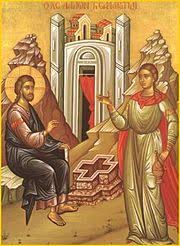 Nazarene theology contains strong support relative to the feminine.
Nazarene theology contains strong support relative to the feminine.
The Nazarenes considered women ‘different but equal’.
Thus, Jesus not only traveled with women
but the women functioned as disciples.
Social custom disallowed men to freely discourse with ‘strange’ women, meaning unrelated or unmarried to the man. Women might speak to a rabbi, for instance, but approaches toward men for general or lengthy conversation might begin to be noticed. Naturally, this practice of men and women remaining distant lends the idea that Mary Magdalene and Jesus were married. Others contend Mary would only be considered a close companion without a physical relationship. This second view might leave Mary open to accusations as a harlot, and Jesus would likewise be disdained, essentially destroying the ministry. No such chance would have been risked. Neither the Pharisees nor others ask about Mary’s status, which they almost certainly would do if she were unattached. This controversial topic will be dealt with in a later article.
Furthermore, the expectation of marriage for Nazarene men stood above all standards relative to full manhood. This standard held doubly true for priests. An unmarried rabbi could not reasonably counsel on marriage or family—not acceptable in this historical period. Josephus writes about celibate Qumran Essenes and Essenes who married foremost for family (Nazarenes). Almost all scholars agree with these designations. As an added note concerning marriage, the terms ‘companion’ and ‘wife’ were synonymous in biblical times.
Though not against the law, the Pharisees nonetheless became conflicted when Jesus included women within his ministry organization, as this was most unusual. The fact that the women spoke as disciples, woman to woman, leads to a consequential feminine ministry influence, stirring who knows what within the home. Mt. 10.34-39, “And a man’s foes shall be they of his own house,” tells us of the controversy Jesus believed his ministry would create. In other words, the wife might become converted but the husband not, or perhaps roundabout.
 The women’s conversion might have occurred from
The women’s conversion might have occurred from
speaking to Mary Magdalene herself.
Jesus also includes common folk, those not of the priesthood. By extension, Jesus moves the Nazarene Essene vision of an enlightened mind from the confines of retreat and specific to those only within the priesthood, thence into the general population. Legalism is set aside, social custom is set aside. Jesus revealed close-held secrets, even though often related in parables. Many priests would find the revelation of hidden knowledge close to blasphemy, as is referenced in the DSS. Jesus however, continued to sow good seeds amongst the populous.
*
The revelation of Jesus’ identity keynotes his Southern ministry. His performance as a true Adept becomes a point of contention between Jesus and the Qumran scribes (Jn. 10.17-30). These verses concern references to soul identity, the application of healing, the declaration of oneness with God, and Jesus himself having the power to offer eternal life (v. 28, “and I give unto them eternal life [the spirit]“). To those who follow him, this scriptural passage becomes perhaps the most important speaking. It denotes Jesus as the Messiah. It also separates the wheat and the chaff, those who hail him as Messiah and those bitterly against him. John 10.31, witnesses this last, “the Jews (usually noted as Pharisee priests and scribes) took up stones again to stone him.”
Many other truths Jesus hid within parable teaching. The Parable of the Prodigal Son (Lk. 15.11-17) contains a plentitude of obvious lessons for any thinking woman or man. In Matt. 13.17, Jesus follows with the Parable of the Sower and mentions how the wicked one will snatch the seed of knowledge from those unwitting or whose hearts have waxed gross. In the Matthew scripture, Jesus next talks about the tares (Mt. 13.24-26), which contain an implied meaning toward the current priesthood or Satan himself. The lawyers of the Qumran Essene and the Pharisees would have grasped the meaning and taken offense.*
*John 10.17-30
Even so, the disciples, who attained only partial illumination, and other citizens previously deemed unworthy of higher knowledge, all heard and understood as they might. Jesus did not make all parables equal, nor did Jesus always explain them. However, the people did understand other parables, such as The Parable of the Mustard Seed in Mt. 13.31-35 (Parables). That all parables were not understood would stir up controversy as to meaning.
 All Essene advocated some separation into the desert for mystical/spiritual development, undisturbed seeking, and continuing the practice of contemplative life. Jesus and John the Baptist engaged in this practice.
All Essene advocated some separation into the desert for mystical/spiritual development, undisturbed seeking, and continuing the practice of contemplative life. Jesus and John the Baptist engaged in this practice.
For Jesus, the succinct scripture as to times of separation is found in Mark 1.12-13, “And immediately the Spirit drove him into the wilderness.” For John, Mark 1.4 is as direct, “John came baptizing in the wilderness [as opposed to the cities] and preaching a baptism of repentance for the remission of sins [forgiveness].” The anointing of Jesus would have to be described as a mystical experience, essentially the Shekinah glory, the administration of the spirit of God upon Jesus: Mark 1.10, “…spirit descending upon him like a dove.”
The Nazarenes would heavily emphasize qualities from direct communion with God: Jn. 8.16, “am with the Father who sent me;” Jn. 10.30, “I and my Father are one,” direct knowledge of God, beingness with God; Lk. 17.21, “kingdom of God is within you;” and spiritual truth, Jn. 4.23, “worshippers will worship the Father in Spirit and in truth; for the Father is seeking such to worship Him,” and Jn. 15.26, “Spirit of truth who proceeds from the Father, He will testify of me.” The teaching of the Way soars compared to scribal or Levitical interpretations or legalism. Jesus’ understanding confounds the Essene scribes,* Pharisees, and Sadducees and reveals the gulf between the two.
*In the New Testament, the scribes are mentioned more than any other group.
From the Essene mystical traditions and applications, such as the practice of laying on hands, are yet another example of mystical development and conveyed mystic secrets. Many historical references denote Nazarenes for the healing application or gift (see Acts 9.10-19, concerning Ananias), as well as prophecy.* The Messiah would demonstrate these two outstanding gifts. The mystic healing art and prophecy gifts would assist men in recognizing Jesus, thence allowing Jesus to tender the final interpretation of the Law and the Prophets. Even though previous prophets each made his or her historical contribution, the Essene believed this final interpretation remained for the Messiah to deliver.
*Prophets are more correctly denoted as ‘speakers’ or ‘spokesmen’. The term does infer revelatory knowledge or inspirational speaking.
Jesus’ teaching is both mystical and practical, which is in the nature of the Way. In Jn. 16.16 he tells the people, “A little while, and you will not see me; and again a little while, and you will see me, because I go to the Father.” For the people who are so oppressed, this mystical expression and its implications might be more comforting than any message Jesus could deliver. Jesus explains his meaning in John 16.16-31.
With the addition of non-Mosaic purification laws, the sabbath had become measured by a strictly defined performance of man unto God. This imposition into the sabbath greatly contrasted what had more traditionally been a day of rest for man, just as illustrated in Genesis by God resting on the seventh day and also supported in Exodus as a day from labor, and given by Jesus as a day wherein good works may be done (Mt. 12.10-13). Again, the spiritual clarity Jesus brings to the sabbath fulfills the actual interpretation of the Law and the intent of the Prophets, even unto the full measure.
In all this, Nazarene Jesus views the current priesthood as having lost the spirit of the law. The tradition of love and mercy as foremost had become muddled, and sensitivity toward the people had become dispassionate. The situation resembled the many players on a stage whose intents and purposes had become nothing but the players’ own. All three sects, Sadducee-Pharisee-Qumran (Ossaean) Essene, stood guilty in the eyes of Jesus.
Has this article been helpful and informative? Let us know.
God Bless!
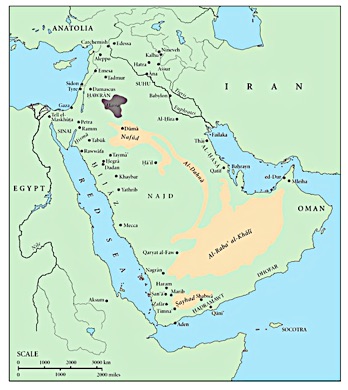

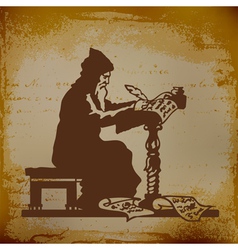
I am enjoying this website and its content and TRUTH very much.
Thank you, Lorie. Always trying to be more accurate.
Great help thanks
Outstanding post, you have pointed out some superb details , I besides think this s a very good website.
Magnificent beat ! I wish to apprentice while you amend your site, how can i subscribe for a blog web site? The account aided me a appropriate deal. I have been tiny bit acquainted of this your broadcast offered vibrant transparent idea
Having read this I believed it was very enlightening.
I appreciate you finding the time and energy to put this short article together.
I once again find myself spending way too much time
both reading and posting comments. But so what, it was still worthwhile!
It’s awesome to visit this website and reading the views of all mates on the topic of this paragraph, while I am also eager of getting familiarity.
First of all I want to say terrific blog! I had a quick question which I’d
like to ask if you don’t mind. I was interested to find
out how you center yourself and clear your mind prior to writing.
I’ve had difficulty clearing my thoughts in getting my ideas out.
I truly do enjoy writing however it just seems like the first 10 to 15 minutes
tend to be lost just trying to figure out how to begin. Any suggestions
or hints? Appreciate it!
I reread previous text. I often do minor editing. Thought pieces, which describe most of my site, can be particularly difficult. A paragraph may have a sentence in the wrong order, or you will note one para. looks fine but the next one appears clumsy- these discoveries, when corrected, will smooth out your work; then it is good to pick up your work where you left off.
Happy writing…C. Ray
I like what you guys are usually up too. This sort of clever work and coverage!
Keep up the fantastic works guys I’ve included you guys to my blogroll.
Johnie,
Thanks for inclusion. Would suggest e-book for real results in life’s changes. Long term, sowing good seed combined with a manual to follow shows positive long term results.
I absolutely love your website.. Great colors & theme.
Did you make this website yourself? Please reply back as I’m hoping to create my own site and would like to find out where you
got this from or exactly what the theme is named.
Cheers!
Designed it myself, had my webmaster build it. When you build a website, think about being creative and something that reflects your website topic.
Your mode of telling all in this post is really
pleasant, all be able to without difficulty know it, Thanks a lot.